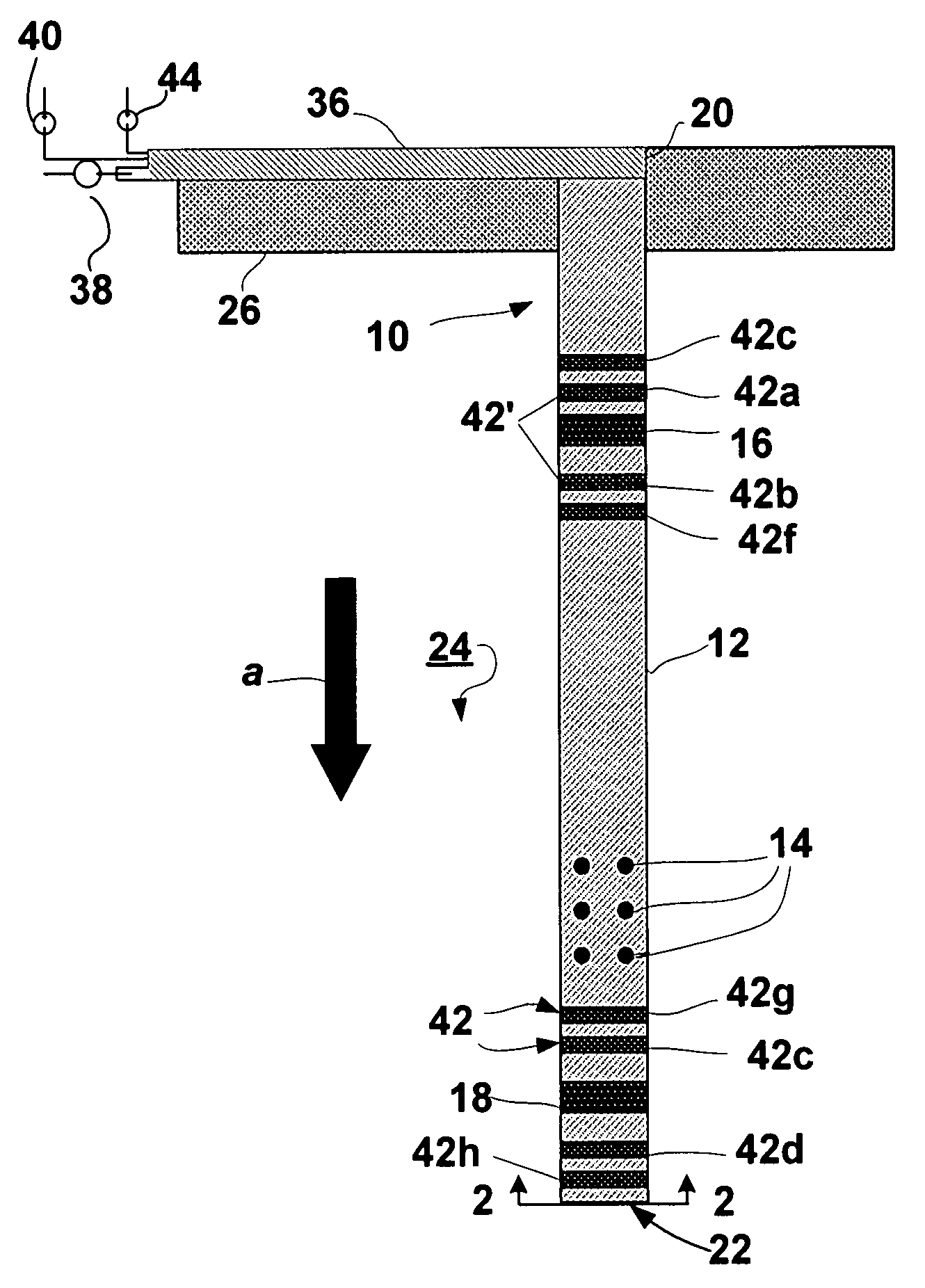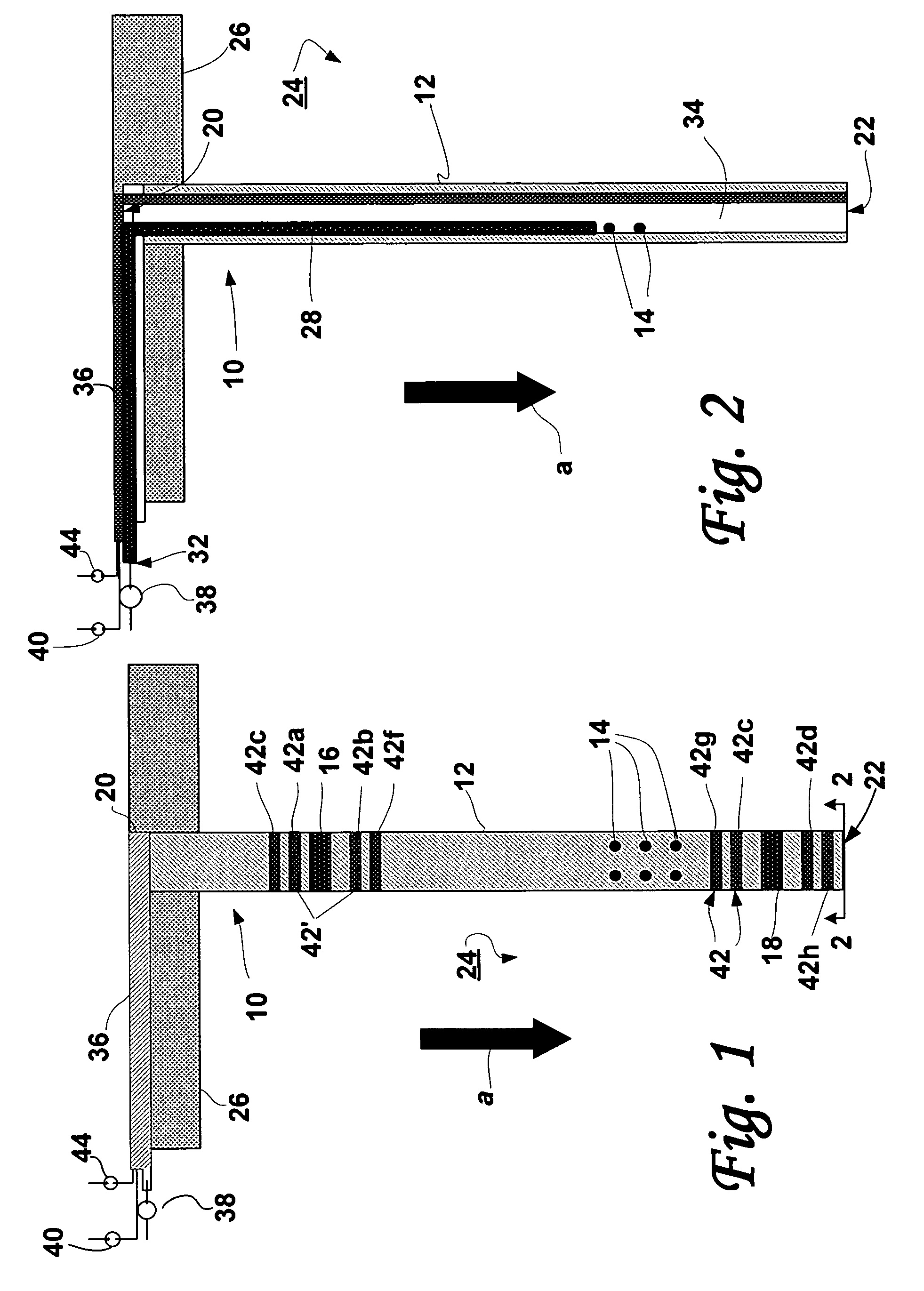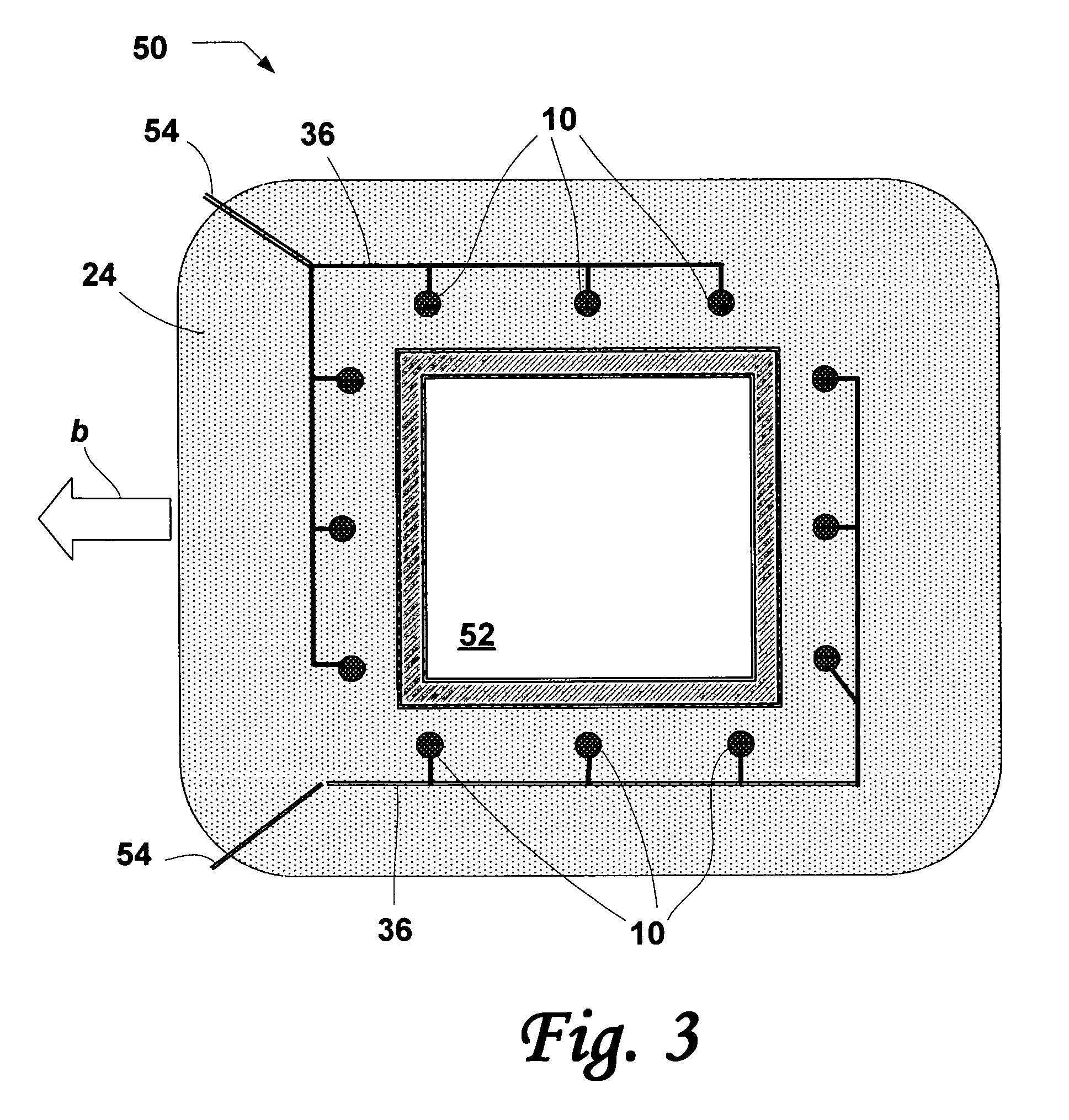Method and system for dewatering particulate materials
a technology of particulate materials and dewatering systems, which is applied in the direction of fluid pressure measurement, liquid/fluent solid measurement, peptide, etc., can solve the problems of deterioration of materials, large amount of energy used, unstable storage and storage, etc., and achieves rapid depolarization and simple installation and uninstallation.
- Summary
- Abstract
- Description
- Claims
- Application Information
AI Technical Summary
Benefits of technology
Problems solved by technology
Method used
Image
Examples
Embodiment Construction
[0028]Referring now to the drawings, and specifically to FIGS. 1 and 2, there is shown a probe 10 for dewatering a particulate material according to the present invention. Dewatering probe 10 generally includes a non-conducting pipe 12 having a plurality of drainage holes or slots 14. An anode 16 and a cathode 18 are mounted on non-conducting pipe 12 adjacent opposing top and bottom ends 20, 22, respectively, thereof. Pipe 12 functions both as a sonde for mounting anode 16 and cathode 18 and as a well used to extract water that collects around the outside of and flows into pipe 12 via holes 14.
[0029]In FIGS. 1 and 2, probe 10 is shown oriented in a particulate material 24 beneath a concrete slab 26 such that anode 16 is above cathode 18. This substantially vertical orientation is preferred, as water will flow in the direction of arrowhead a due to both gravity and electro-osmotic forces, whereas an inverse configuration (that is, with cathode 18 above anode 16) would cause water flo...
PUM
| Property | Measurement | Unit |
|---|---|---|
| voltage | aaaaa | aaaaa |
| voltages | aaaaa | aaaaa |
| DC voltage | aaaaa | aaaaa |
Abstract
Description
Claims
Application Information
 Login to View More
Login to View More - R&D
- Intellectual Property
- Life Sciences
- Materials
- Tech Scout
- Unparalleled Data Quality
- Higher Quality Content
- 60% Fewer Hallucinations
Browse by: Latest US Patents, China's latest patents, Technical Efficacy Thesaurus, Application Domain, Technology Topic, Popular Technical Reports.
© 2025 PatSnap. All rights reserved.Legal|Privacy policy|Modern Slavery Act Transparency Statement|Sitemap|About US| Contact US: help@patsnap.com



